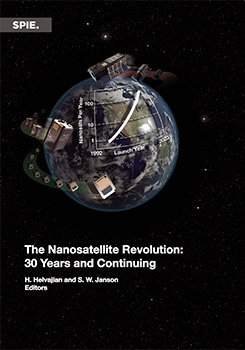|
Nanosatellites with masses of 10 kg and less (such as CubeSats) are seen to be low-cost, nimble platforms ideal for conducting this range of observations either solo or in multiple locations as a swarm. However, current detector technology limits the measurement capability by restrictions of size, power, and thermal stability of the nanosatellite platform. To meet these challenges, NASA Glenn Research Center (GRC) is developing a suite of CubeSat-based radiation detectors based on wide-bandgap (WBG) semiconductors to study solar and cosmic ray ions in lunar orbit or deep space. These WBG semiconductors have the benefit of high thermal stability, low noise, and tolerance to radiation damage that allows fabrication of compact detectors that are easily configurable for a nanosatellite platform. |
|
|


